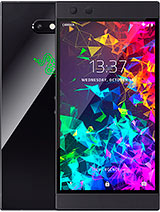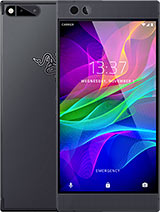Razer Phone Camera Review By RevAtlas
Raise has his priority sat on the table for everyone to see the Raise phone is a smartphone. That's meant for content consumption, not content creation, however, being a smartphone to be announced in 2017, it's expected to come with two cameras at the very least and as most high-end smartphones choose to come with dual camera setups at the rack. Razor also decided to join the bandwagon. While they really haven't talked much about the camera on the razor phone and haven't really mentioned it as a major feature. It could still be a deciding factor for many consumers. This is something from Refit list.
Let's take a look at what the cameras on the razor phone can deliver. The razor phone, like many other flagships in 2017 and 2018 packs a dual camera setup at the back, how it might seem one that may be just for bragging rights. It has a wide-angle and telephoto setup where both are 12 megapixels snappers, but the wide-angle lens gets F 1.8 aperture, while telephoto lens gets a smaller F 2.6 aperture by default. The camera captures some really unimpressive images. They look really flat and seem like they were captured with something from the mid-2000s, especially due to the appalling dynamic range.
I would even hate to call it dynamic range, since there is nothing dynamic about it, they may just capture, have decent detailing as long as there is not a lot of sunlight involved. If this is a lot of Sun or too bright of scenario, then the detailing seems to get softer and sharpness drops a lot as well as experiencing some weird artifacts and more aid. The saving grace is in the form of the HDR mode, which we suggest keeping on at all times be well lit or low light conditions. The HIM mode is pretty aggressive, especially when compared to photos where, as we are, is turned off it's almost as if the photos were taken by two different cameras altogether. This is easily apparent, especially in outdoor conditions, where there's a huge disparity between the shadows and highlights.
Take these two photos. For example, the regular mode seems like someone did a selection on the sky and deleted it altogether, while in reality only the HDR mode is able to retain information from the highlights. The shadows do get a bit darker, while the mid-tones remain about the same. How the difference it makes both images is huge, which is why we said: keep the HDR turned on always image. Quality is decent on the wide-angle camera, but the quality drops quite a bit on the telephone.
This may not be apparent when viewing the image zoomed out or on your social media, but when you zoom in or crop in, it makes a huge difference. In fact, it's probably a better idea to just shoot with the regular camera and crop and later than in most cases, it makes no difference, and in some it may even come out better. You also have the option of using it as it is well that isn't the option if you shoot in 2x mode as you can't zoom out later, the front-facing camera is need my pixel f/2 camera. There is no beautification of portrait mode here, but you can choose to have HDR turned on or off here as well without next year. It would seem as if the sky and my head are literally one single object, but at least the HDR mode creates some separation between the two, even with HDR turned on.
However, the quality isn't great. The colors are fair, but there are some weird artifacts and the sharpness is dodgy now on to the video mode, which is probably the aspect of the camera that it does best. It supports 4k 30fps at max and, unlike the photos, the videos do have pretty good detail, contrast and sharpness. However, you want stabilization. You'll need to choose, 1080p mode, which does have II is yes, isn't very aggressive, but at least is better than having none at all.
The front-facing camera, too, can record 1080p videos with a fair amount of detail, sharpness and contrast as well as II is. This is the front-facing camera on the Rays of home, taking canonical videos? Let me know how the overall sharpness is stabilization, how the exposure contrast, ratio and various other aspects of the video is, and even how well it's picking up my voice. So let me know this brings me to a main issue about the razor camera, which is the app itself there's nothing to talk about in terms of features on this thing, no panorama mode, no slow-motion, no pro or manual mode, and almost nothing, except for a basic photo and video mode with the timer, as well as toggles for flash, HDR and grid. In fact, the zoom feature was horrible before the update, where they kept seamless zoom, which didn't have any indication on whether you were zooming in so much so that digital zoom was being applied or not. Since then, they've created a 1x and 2x toggle, which makes things a lot easier.
The razor phone isn't directed at camera of photography enthusiasts, but it performs decently comes to camera, at least in HDR mode. How has further let down by a mediocre telephoto camera and a skeletal level camera app? That needs a lot of work even for it to be present. On a flagship phone such as this I again stress that razor intends his phone for content consumption, gaming of videos of browsing etcetera, but not want to make photos and videos with when you think of it. That way, it does a fairly good job and can be acceptable. If that's what you intend to do with this device.
Thanks for watching, see you again in the next one.
Source : RevAtlas


























